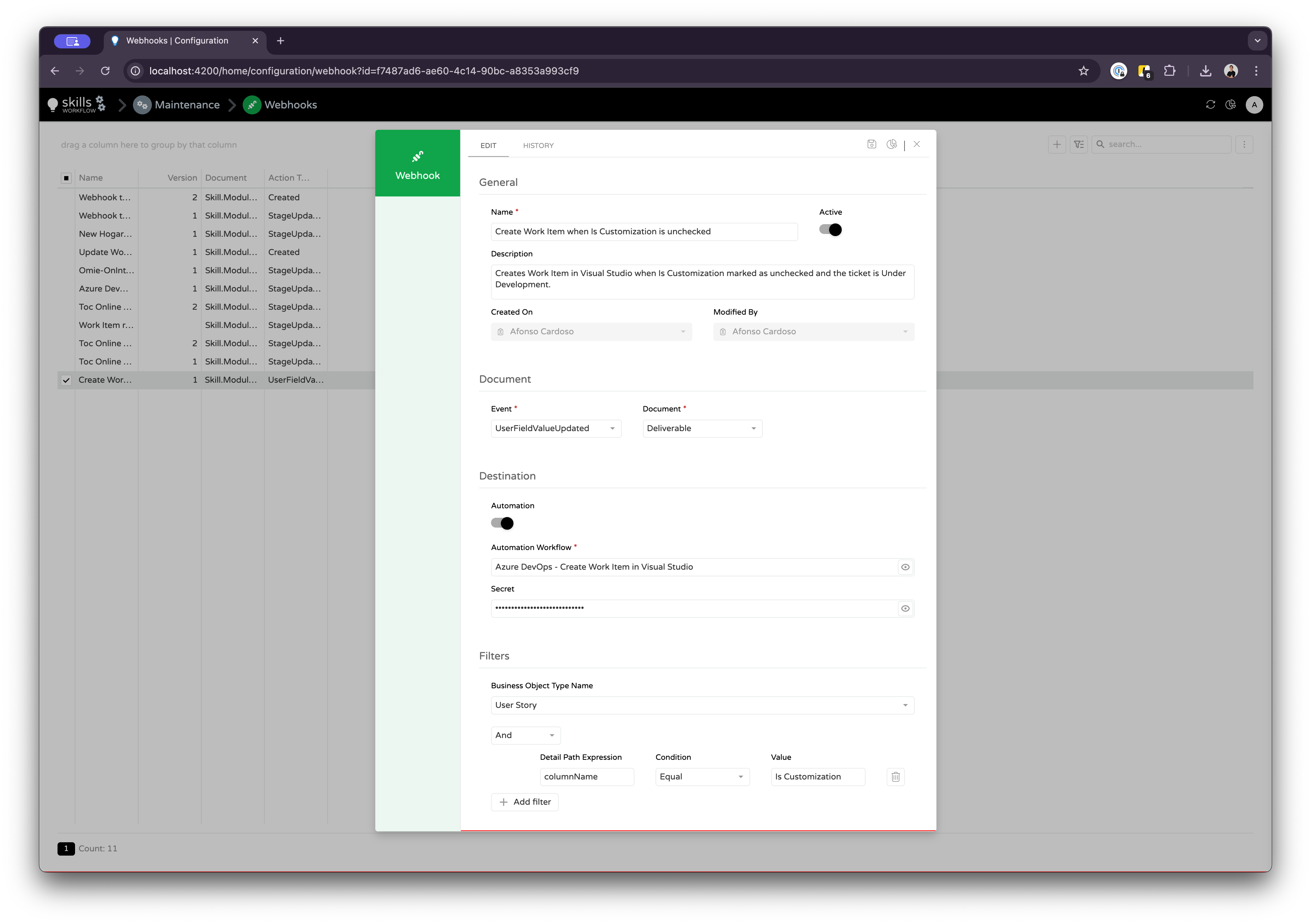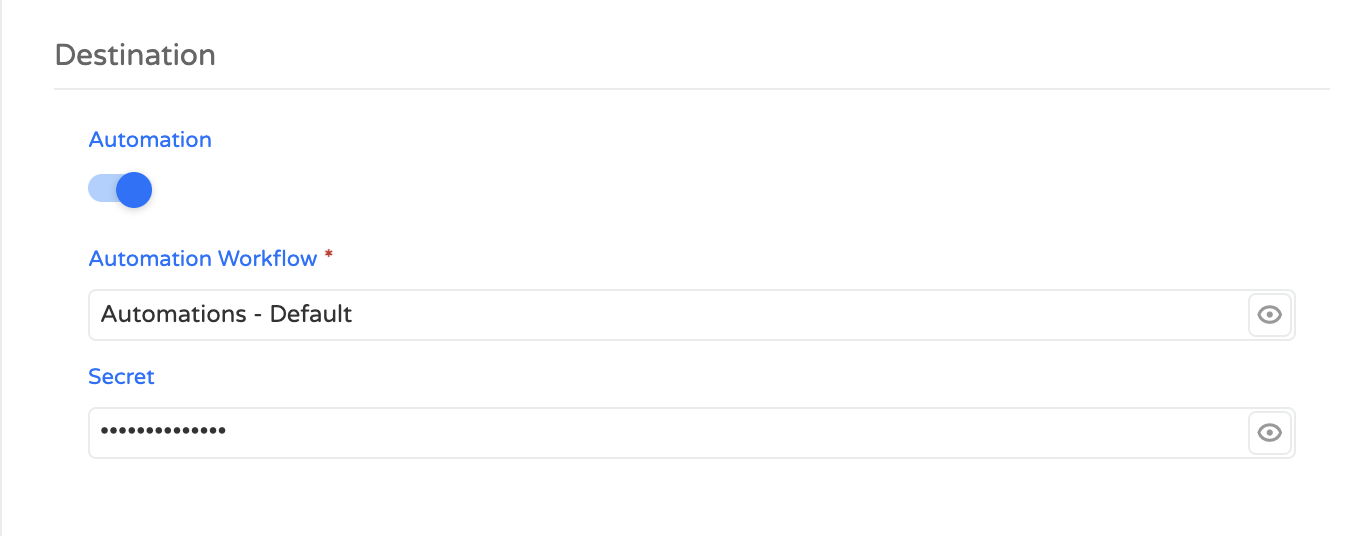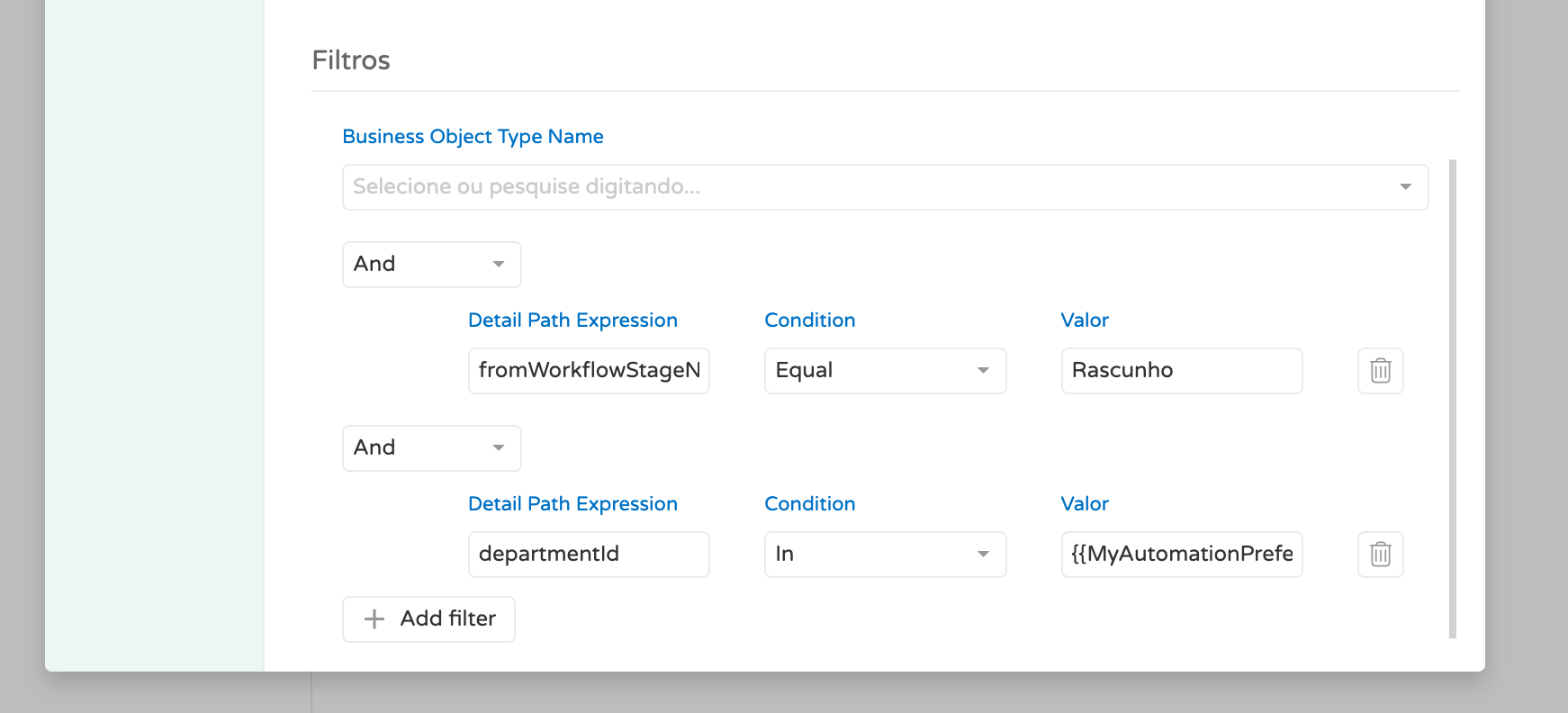Webhooks
Overview
Webhooks in Skills Workflow allow for seamless integration between the platform and external systems by triggering automated actions in response to specific events. When a configured event occurs (e.g., a field is updated or a document is created), the webhook sends a payload to a predefined destination, allowing you to keep systems in sync or trigger automated processes.
Purpose
The purpose of webhooks is to automate workflows by reacting to changes within the Skills Workflow platform without manual intervention. They eliminate the need for polling and enable real-time communication with other tools such as Azure DevOps, Jira, Slack, or custom endpoints.
Use Cases
- Create a work item in Azure DevOps when a specific user field is updated.
- Notify a third-party system when a deliverable reaches a certain status.
- Trigger CI/CD pipelines when a task is marked as ready for development.
- Synchronize data between Skills Workflow and external databases or APIs.
Key Limitations
- Webhooks are only triggered for the selected Event and Document types.
- The destination system must be able to receive and process the webhook payload.
- Filtering logic must be correctly configured to avoid unintended triggers.
- No retry mechanism is in place if the target system fails to respond.
Getting Started
To configure a webhook, go to:
Maintenance > Webhooks > Create New Webhook
Fill out the form as follows:

General
-
Name
A descriptive title for the webhook. This is used internally to identify the configuration.
Example:Create Work Item when Is Customization is unchecked -
Active
Toggle to enable or disable the webhook. Only active webhooks will be triggered. -
Description
A short explanation of what the webhook does and when it should be triggered.
Example:Creates Work Item in Visual Studio when Is Customization is unchecked and the ticket is Under Development. -
Created On / Modified By
Automatically filled metadata about who created or last modified the webhook.
Document
-
Event
The type of event that should trigger the webhook.
Example:UserFieldValueUpdated(fires when a user-defined field changes) -
Document
The document type on which the event will be applied.
Example:Deliverable,Estimate,User Story, etc.
Destination
- Automation
Toggle to activate an automation workflow instead of a standard HTTP call.
- Url
- Automation Workflow
-
URL
If the webhook triggers an external url.
Example:https://example.com/webhooks/my-webhook
URL
-
Automation Workflow
If the webhook triggers an internal automation (e.g., an Azure DevOps integration), select the appropriate workflow from the list.
Example:Azure DevOps – Create Work Item in Visual Studio
Automation Workflow
- Secret
A secure key used to authenticate the webhook request with the external system.
Filters
-
Business Object Type Name
Defines which type of object the webhook should be applied to (e.g.,User Story,Estimate,Job, etc.). -
Filter Logic (AND/OR)
Combine multiple filters using logical operators.
Example: UseANDto ensure multiple conditions must be met. -
Detail Path Expression
The specific field or column within the business object to evaluate.
Example:columnName -
Condition
The condition to match.
Options:Equal,Not Equal,Contains,Does Not Contain,In,NotIn. -
Value
The expected value that will trigger the webhook when the condition is met.
Example:Is Customization
Filters allow fine-tuning of when a webhook should be executed to avoid triggering actions unnecessarily.
Dynamic Filter Values
You can use System Parameters as dynamic values in filters. To reference a system parameter:
- Use the format:
{{SystemPreferenceName/KeyName}} - Example:
{{MyAutomationPreferences/departments}}
{
"user": "skills-user",
"password": "my-strong-password",
"departments": [
"6f51b21e-2dcc-4f5e-aebb-491b54800bf1",
"a733e914-18ea-4c92-94b4-59491badc974",
"ecc30504-1f5c-4b3b-a864-da85d04ebabe",
"d42168e4-f690-4546-8197-54ba344a1806"
]
}
- Example Usage:
